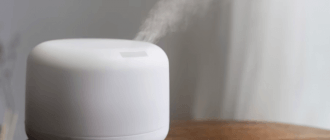How to Improve Seasonal Allergies with Better Indoor Air
As the seasons change, so do the allergens in the air. For many of us, this means dealing with uncomfortable symptoms like sneezing, itchy eyes, and a runny nose. However, did you know that your indoor air quality plays a crucial role in managing seasonal allergies? That’s right! The air inside your home can be just as harmful as outdoor pollutants. In this blog post, we’ll explore how to improve seasonal allergies with better indoor air quality solutions such as regular cleaning, using air purifiers and dehumidifiers, and even HVAC maintenance. Say goodbye to those pesky allergy symptoms with these effective strategies for cleaner indoor air!
What are Seasonal Allergies?
Seasonal allergies are a common problem that affects millions of people around the world. These allergies occur when your immune system reacts to allergens present in the environment, such as pollen, dust mites, and animal dander. The symptoms of seasonal allergies can range from mild to severe and can include sneezing, runny nose, watery eyes, itching throat, and congestion.
Typically occurring during specific times of the year when certain plants release their pollen into the air or animals shed their fur or hair more heavily than usual, for example, springtime for tree pollens or summer for grasses.
It’s important to remember that seasonal allergies are different from food allergies or other types of allergic reactions caused by exposure to chemicals or medications. Seasonal allergies typically manifest themselves through respiratory symptoms but can also have skin irritations in some cases.
If you suffer from seasonal allergies, it is important to consult with a medical professional on ways you can manage your condition effectively, including avoiding triggers if possible along with taking over-the-counter medication if necessary.
Common Allergens and Symptoms
Seasonal allergies are caused by a range of common allergens, including pollen from trees, grasses, and weeds. Other common allergens include mold spores, pet dander, dust mites, and insect droppings. When these allergens enter the body through inhalation or direct contact with the skin or eyes, they can cause a range of symptoms.
Symptoms of seasonal allergies may vary depending on the type of allergen causing the reaction. Common symptoms include sneezing, runny nose congestion, itchy or watery eyes, coughing and wheezing. Additionally, some individuals may experience headaches, fatigue, and irritability during allergy season.
It’s vital to recognize these symptoms early so that you can seek appropriate treatment before they worsen. Contact your doctor if you notice any unusual symptoms during allergy season.
The Role of Indoor Air Quality in Seasonal Allergies
The role of indoor air quality in seasonal allergies cannot be overstated. In fact, the indoor air quality of our homes can often be worse than outdoor air quality due to a lack of ventilation and exposure to allergens such as pet dander, dust mites, and mold.
When we breathe in these allergens, our bodies react by releasing histamines which cause allergy symptoms like sneezing, itching eyes/nose/throat, congestion, and even asthma attacks. Therefore, improving indoor air quality is an important measure for those who suffer from seasonal allergies.
One way to improve indoor air quality is through regular cleaning. Dusting surfaces regularly with a damp cloth can help remove irritants that accumulate over time. Additionally, using vacuum cleaners equipped with HEPA filters can capture microscopic particles that would otherwise remain airborne.
Another effective method for improving indoor air quality is using an air purifier. These devices work by removing pollutants from the surrounding environment before they have a chance to circulate throughout your home.
Opting for allergen-proof bedding like pillowcases and mattress covers made from hypoallergenic materials will also prevent dust mites from building up on fabrics inside your home.
Keeping windows closed during peak pollen times or when there’s high humidity outside can reduce exposure to external pollutants while running dehumidifiers will keep moisture levels low, preventing mold growth indoors which also aggravates allergies.
Finally, in addition to these measures, HVAC maintenance should never be overlooked since dirty filters or ducts may compromise the effectiveness of heating/cooling systems, thereby worsening allergy issues.
A professional Indoor Air Quality audit could reveal hidden sources of pollution that common methods won’t identify, thus providing more tailored solutions.
Effects of Poor Indoor Air Quality on Allergies
Poor indoor air quality can worsen seasonal allergies and lead to a range of health problems. When allergens like pollen, dust mites, and pet dander accumulate indoors, they can trigger allergic reactions such as sneezing, coughing, and itchy eyes. Exposure to high levels of these allergens for extended periods can even cause asthma attacks in some people.
Additionally, poor indoor air quality can also affect the immune system’s ability to fight off infections. The accumulation of pollutants in the air we breathe makes us more susceptible to illnesses such as colds and flu. This is because our bodies are already working overtime trying to cope with the constant presence of airborne irritants.
Moreover, prolonged exposure to poor indoor air quality has been linked to long-term health issues like heart disease and lung cancer. These conditions develop over time due to chronic exposure to harmful particles that penetrate deep into our respiratory systems.
Improving indoor air quality is critical not only for managing seasonal allergies but also for maintaining overall health and well-being. By taking simple steps such as regular cleaning or using an air purifier or dehumidifier device, you’ll create a healthier living environment for yourself and your loved ones!
Strategies for Improving Indoor Air Quality
Improving indoor air quality has a significant impact on managing seasonal allergies. The following strategies can help reduce allergens and improve the overall air quality in your home.
Regular Cleaning
Regular cleaning is an essential element in maintaining good indoor air quality and reducing the impact of seasonal allergies. Dust, pollen, pet dander, and other allergens can accumulate over time, causing discomfort for those who suffer from allergic reactions.
One effective strategy for managing these allergens is to maintain a regular cleaning schedule. This includes vacuuming carpets and upholstery frequently using HEPA filters or high-efficiency particulate air filters that capture small particles.
In addition to vacuuming, dusting surfaces such as shelves, blinds, and furniture should be done regularly. It’s also important to wash bedding weekly in hot water to kill off any mites or other allergens that may have accumulated.
Another way to reduce the level of allergens in your home is by keeping humidity levels low because damp conditions can encourage the growth of mold which can trigger allergic reactions.
Regularly airing out your space by opening windows on dry days will help improve ventilation. By implementing a consistent cleaning routine into your daily life, you’ll create a healthier living environment while minimizing symptoms related to seasonal allergies.
Using Air Purifiers
Air purifiers are a great way to improve your indoor air quality and reduce the presence of allergens in your home. These devices work by filtering out airborne particles, such as dust, pollen, pet dander, and mold spores that can trigger allergy symptoms.
When shopping for an air purifier, it’s important to choose one that is specifically designed to filter out the allergens that affect you. Look for models with HEPA (High-Efficiency Particulate Air) filters as they are proven to be highly effective at removing microscopic particles from the air.
It’s also important to choose the right size of air purifier based on the room where it will be used. A small unit won’t effectively clean a large living area while an oversized model may not operate efficiently in a small bedroom.
Keep in mind that while air purifiers can help reduce airborne allergens, they’re not a cure-all solution. Proper cleaning practices and other strategies should still be employed alongside using an air purifier for maximum effectiveness.
Incorporating an air purifier into your seasonal allergy management routine is definitely worth considering if you want cleaner indoor air and relief from allergy symptoms caused by common allergens like dust or pollen.
Opting for Allergen-Proof Bedding
Opting for allergen-proof bedding is an effective way to reduce exposure to common allergens that trigger seasonal allergies. Dust mites are a top source of indoor allergies, and they thrive in soft materials such as bedding.
To prevent dust mites from accumulating in your bedding, look for hypoallergenic pillows and mattress covers made with tightly woven fabrics that effectively block out these tiny pests. Also, consider using washable blankets and comforters that can be frequently laundered at high temperatures to kill any dust mites.
Another option is opting for natural fiber sheets like cotton or bamboo as they are more breathable than synthetic fibers, which reduces humidity levels, making it hard for dust mites to survive. It’s also important to wash all bed linens regularly in hot water (130°F) and dry them on high heat settings.
Taking these measures will ensure a comfortable sleep environment while reducing allergic reactions caused by airborne particles trapped within the fabric of your bedding.
Keeping Windows Closed
One of the simplest ways to improve indoor air quality and reduce exposure to allergens is by keeping windows closed during peak allergy season. This may seem counterintuitive since fresh air is often associated with good health, but outdoor air can contain high levels of pollen and other allergens.
When the weather is nice outside, it’s tempting to open up all the windows and let in that cool breeze. However, doing so can lead to allergy symptoms like sneezing, coughing, and itchy eyes. Instead, try using an air conditioner or a fan to circulate indoor air.
If you do need some fresh air in your home, consider opening windows early in the morning or late at night when pollen counts are lower. Additionally, be sure to check daily pollen reports for your area before opening any windows.
By keeping your windows closed during peak allergy season, you’ll be helping to keep irritants out of your home and reducing your risk of experiencing uncomfortable symptoms.
Using Dehumidifiers
Dehumidifiers are an effective tool for improving indoor air quality and reducing seasonal allergies. These devices work by removing excess moisture from the air, which helps to prevent the growth of mold, mildew, and other allergens.
When using a dehumidifier, it’s important to choose the right size for your space. A unit that is too small won’t be able to effectively remove moisture from the air, while a unit that is too large will use unnecessary energy.
In addition to selecting the right size dehumidifier, it’s also important to properly maintain it. This includes regularly cleaning and emptying the water reservoir as well as replacing any filters.
Using a dehumidifier can help reduce symptoms associated with seasonal allergies such as coughing, sneezing, and congestion. It can also improve overall respiratory health by reducing exposure to airborne irritants.
While not a cure-all solution for seasonal allergies, incorporating a dehumidifier into your indoor air quality strategy can certainly make a positive impact on your health and comfort level at home or in your office space.
HVAC Maintenance for Better Indoor Air Quality
One of the most effective ways to improve indoor air quality and reduce seasonal allergies is through HVAC maintenance. Your heating, ventilation, and air conditioning (HVAC) system plays a crucial role in maintaining good indoor air quality by filtering out allergens and other pollutants.
Dirty or clogged HVAC filters can lead to poor indoor air quality as they cannot effectively filter out dust, dirt, mold spores, pollen, or other airborne particles that cause allergies. Therefore, it’s important to replace your HVAC filters on a regular basis.
In addition to changing the filters regularly, scheduling professional maintenance once or twice a year can also help ensure optimal performance of your HVAC system, which will ultimately create better indoor air quality. A trained technician will be able to clean the coils and ducts while checking for any leaks or damage that could affect how well your system works.
By keeping up with regular maintenance, you’ll not only enjoy cleaner indoor air but lower energy bills too! Regular cleaning reduces wear & tear on your equipment, which ensures its effectiveness for years to come.
Professional Indoor Air Quality Solutions
When it comes to improving indoor air quality and managing seasonal allergies, sometimes a DIY approach may not be enough. In such cases, seeking professional indoor air quality solutions can provide the necessary expertise and equipment needed for optimal results.
One option is to hire an indoor air quality expert who can conduct thorough testing in your home or office space. This will help identify specific allergens and pollutants that are present in your environment, which can then inform the appropriate measures needed to improve air quality.
Another solution is investing in specialized air filtration systems that go beyond standard HVAC filters. These systems use advanced technology like UV light or electrostatic charges to capture microscopic particles like bacteria and viruses that could trigger allergic reactions.
Professional duct cleaning services are also available to remove built-up dust, dirt, pollen, and other debris from HVAC system ductwork. This helps prevent these contaminants from circulating through your living spaces where they could exacerbate allergy symptoms.
Seeking out professional indoor air quality solutions is a wise investment for those looking to manage their seasonal allergies effectively.
Conclusion: The Importance of Indoor Air Quality in Managing Seasonal Allergies
The quality of indoor air plays a significant role in managing seasonal allergies. With allergens such as pollen and dust mites present both indoors and outdoors, it is essential to ensure that your home’s air is clean and free from pollutants that could trigger allergic reactions.
By adopting strategies such as regular cleaning, using air purifiers, opting for allergen-proof bedding, keeping windows closed during peak allergen seasons, using dehumidifiers, and maintaining your HVAC system regularly, you can significantly improve the quality of indoor air in your home.
If these solutions are not adequate enough or if you need professional assistance with improving indoor air quality in your home or office space to manage seasonal allergies effectively, you may want to consider calling an expert in Indoor Air Quality Solutions who can help identify specific solutions tailored to address any unique challenges affecting the quality of your indoor environment.
Ultimately, by taking steps towards bettering the quality of our indoor environments through proper ventilation and filtration systems maintenance, coupled with regular cleaning routines, we can enjoy healthier lives free from symptoms related to seasonal allergies while still enjoying all aspects of life without being limited by allergy season.
Recent Queries:





